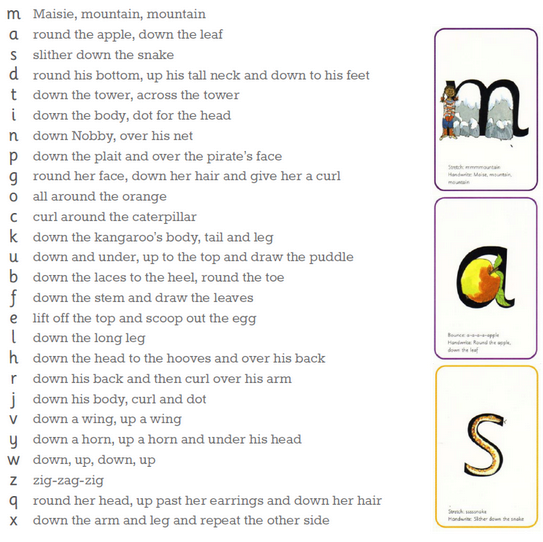Read, Write Inc.
Set 1, 2 and 3
RWI/Sound-Mat.pdf
Set 1 Sounds
Set 1 sounds are taught in the following order together with rhymes to help children form the letters correctly and instantly recognise sounds ready for blending. We do not use letter names at this stage.
 Set 2 Sounds
Set 2 Sounds
The children are then taught Set 2 Sounds - the long vowels. When they are very confident with all of set 1 and 2 they are taught Set 3 Sounds.
|
Set 2 Speed Sounds |
||
|
ay |
ay: may I play |
play, day, may, way, say, spray |
|
ee |
ee: what can you see |
see, three, been, green, seen, sleep |
|
igh |
igh: fly high |
high, night, light, fright, bright, might |
|
ow |
ow: blow the snow |
blow, snow, low, show, know, slow |
|
oo |
oo: poo at the zoo |
too, zoo, food, pool, moon, spoon |
|
oo |
oo: look at a book |
took, look, book, shook, cook, foot |
|
ar |
ar: start the car |
car, start, part, star, hard, sharp |
|
or |
or: shut the door |
sort, short, horse, sport, fork, snort |
|
air |
air: that’s not fair |
fair, stair, hair, air, chair, lair |
|
ir |
ir: whirl and twirl |
girl, bird, third, whirl, twirl, dirt |
|
ou |
ou: shout it out |
out, shout, loud, mouth, round, found |
|
oy |
oy: toy for a boy |
toy, boy, enjoy |
|
Set 3 Speed Sounds |
||
|
Sound
|
Phrase |
Words to practice reading and spelling |
|
ea |
Cup of tea |
clean, dream, seat, scream, real |
|
oi |
Spoil the boy |
join, voice, coin |
|
a-e |
Make a cake |
make, cake, name, same, late, date |
|
i-e |
Nice smile |
smile, white, nice, like, time, hide |
|
o-e |
Phone home |
home, hope, spoke, note, broke, phone |
|
u-e |
Huge brute |
tune, rude, huge, brute, use, June |
|
aw |
Yawn at dawn |
saw, las, dawn, crawl, paw, yawn |
|
are |
Care and share |
share, dare, scare, square, bare |
|
ur |
Nurse with a purse |
burn, turn, spurt, nurse, purse, hurt |
|
er |
A better letter |
never, better, weather, after, proper, corner |
|
ow |
Brown cow |
how, down, brown, cow, town, now |
|
ai |
Snail in the rain |
snail, paid, tail, train, paint, rain |
|
oa |
Goat in a boat |
goat, boat, road, throat, toast, coat |
|
ew |
Chew the stew |
chew, new, blew, flew, drew, grew |
|
ire |
Fire! Fire! |
Fire, hire, wire, bon/fire, in/spire, con/spire |
|
ear |
Hear with your ear |
hear, dear, fear, near, year, ear |
|
ure |
Sure it’s pure |
pure, sure, cure, pic/ture, mix/ture, ad/ven/ture |
 St Joseph's Catholic
St Joseph's Catholic